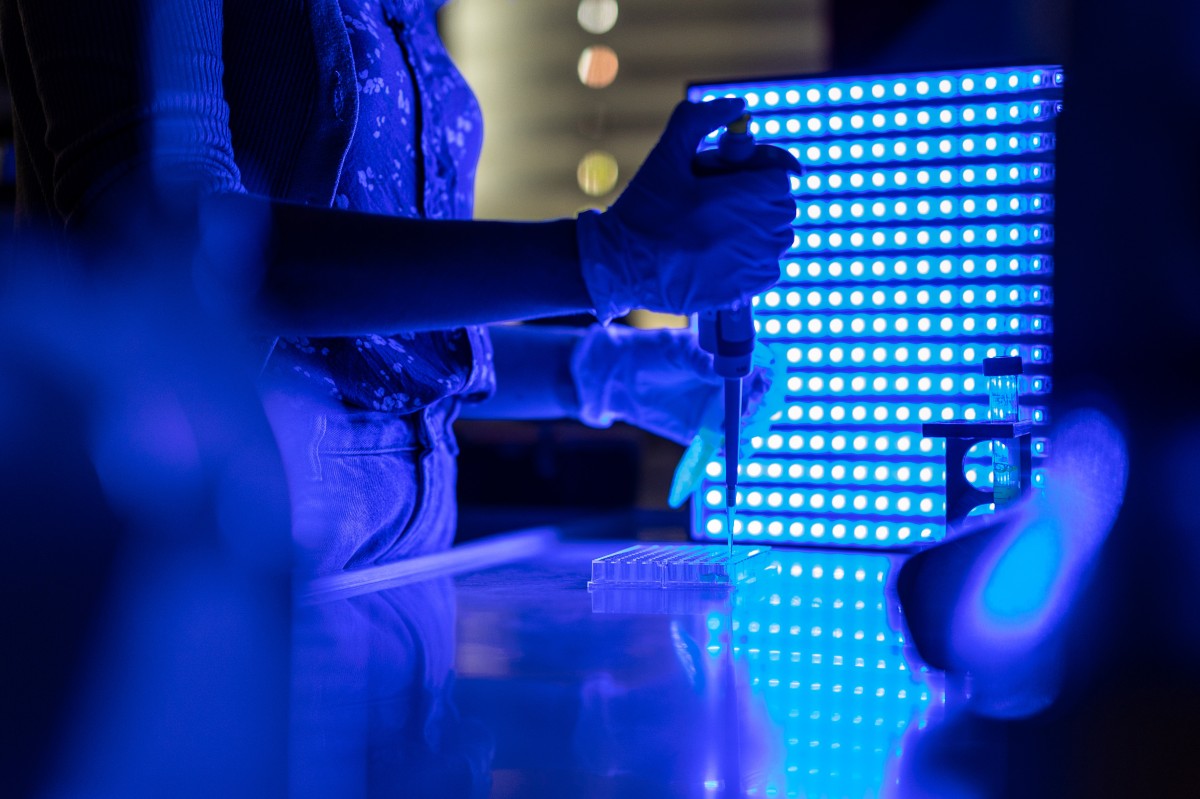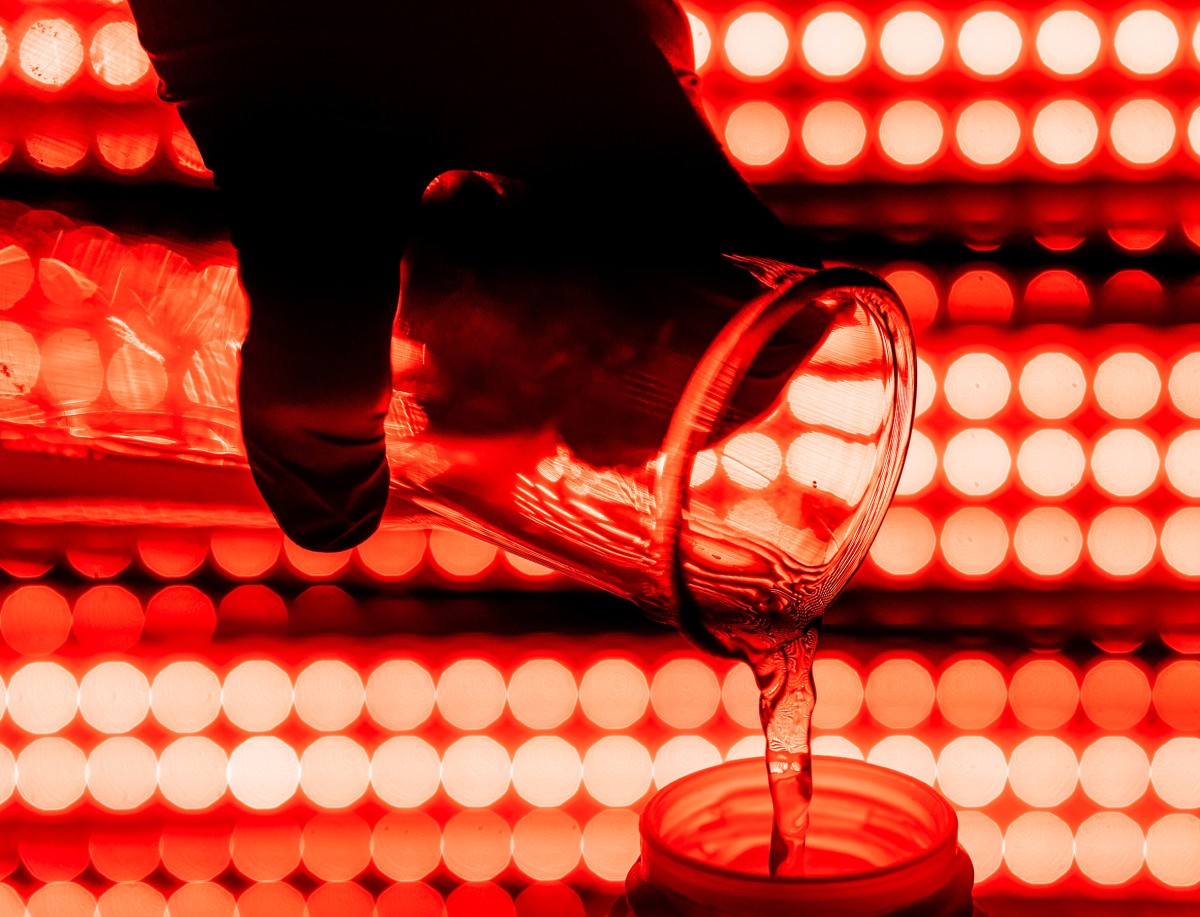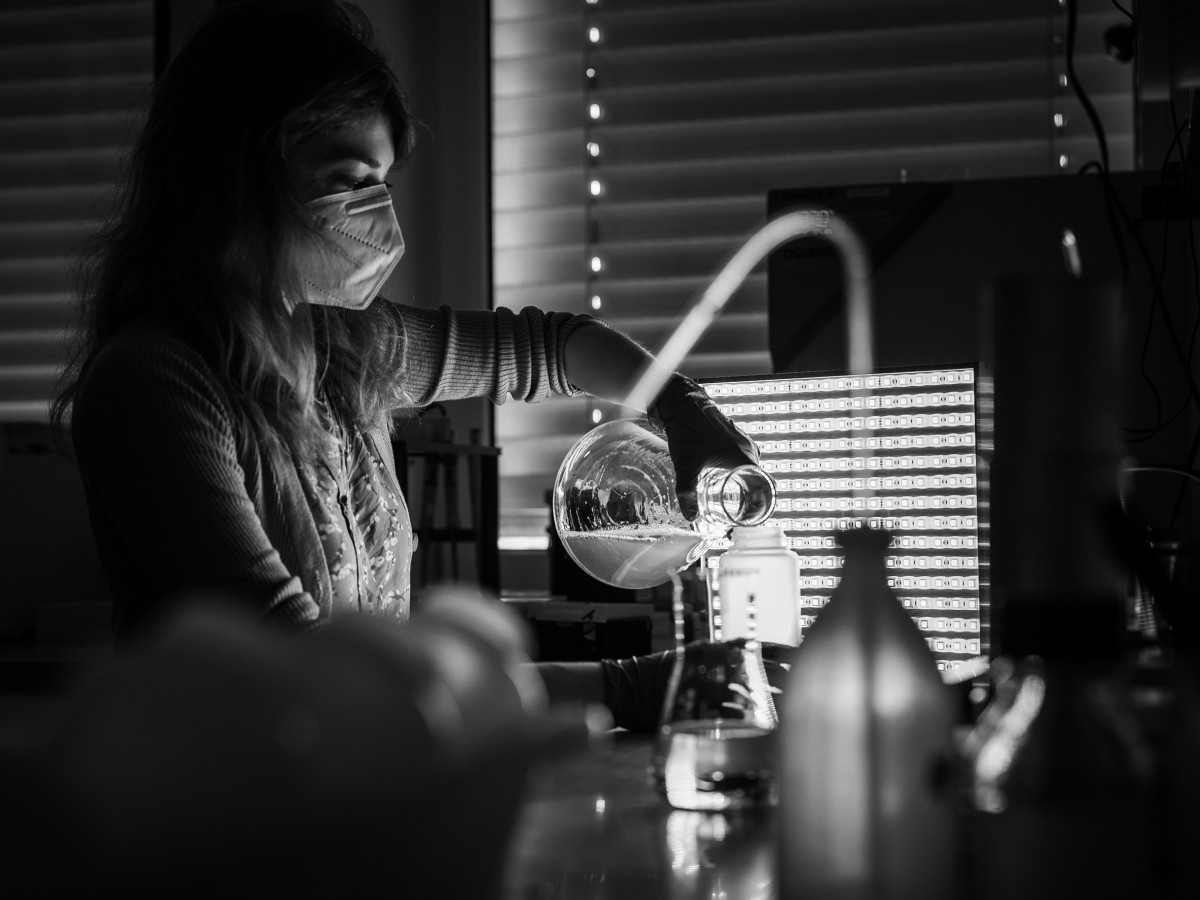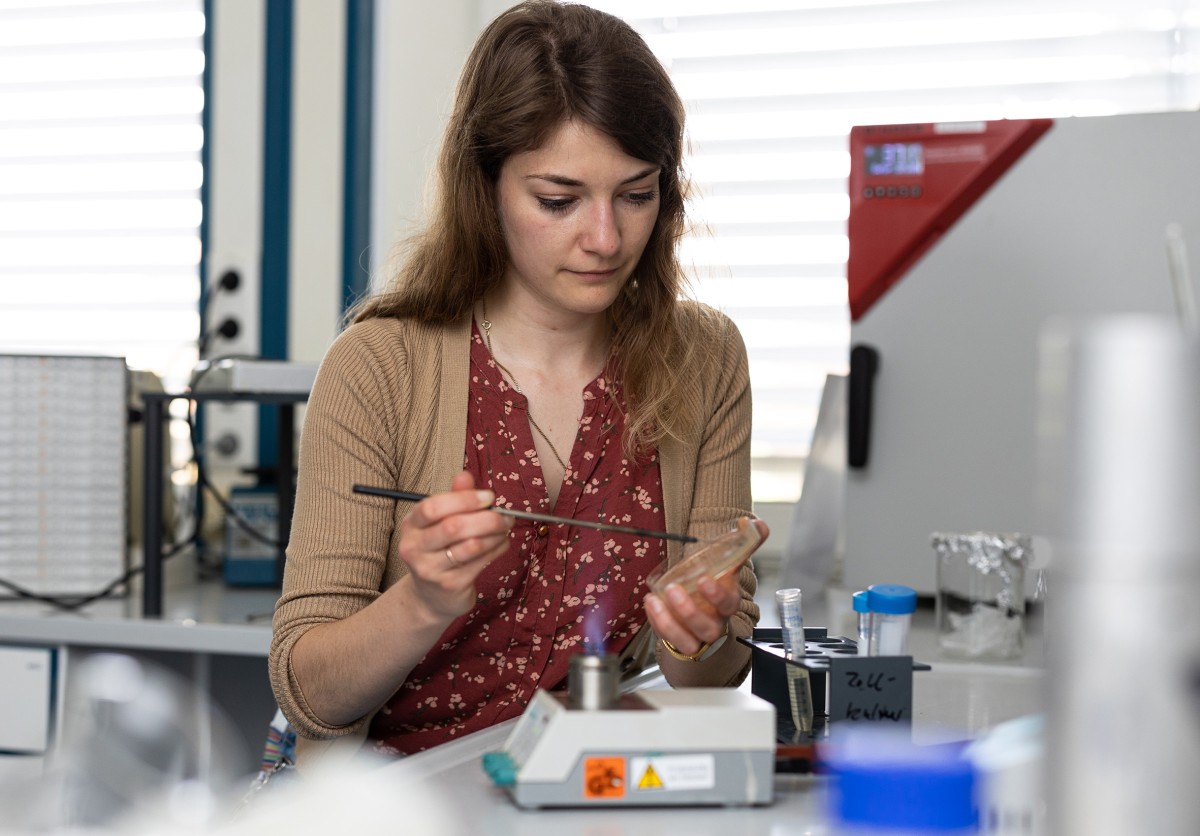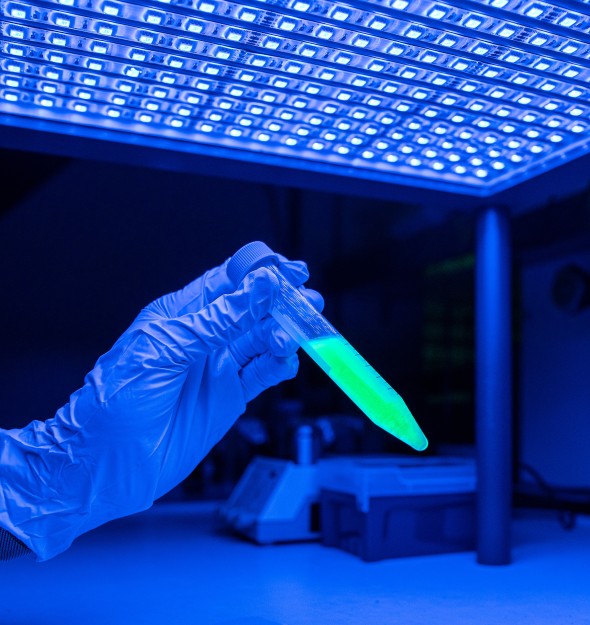
Light show in the lab
Looking at the websites of Prof Seraphine Wegner, who is a researcher at the Institute of Physiological Chemistry and Pathobiochemistry at Münster University’s Faculty of Medicine, the reader comes across English terms such as “photoswitchable”, “spatiotemporal” and “tissue engineering”. For biochemist Wegner and her international team of researchers, these are part of their everyday language, although anyone unfamiliar with the subject may well wonder what they mean. Talking to such a non-specialist, though, Wegner explains in an easy-to-understand way that she and her team use light (from the ancient Greek word “photós”) to change (cell) tissue in both space and time (“spatiotempral”). The team belong to CRC 1459, where they are laying the groundwork for producing light-sensitive intelligent matter.
When she describes the place she works, Seraphine Wegner says that it’s just a normal laboratory. But apart from the typical Bunsen burners, flasks and Petri dishes at Waldeyerstraße 15 – very close to the Trauma Surgery department at Münster University Hospital – there is also something unusual there. The lab shines brightly through light panels – each roughly as wide and as long as a laptop and with a large number of LEDs – in a variety of colours. Wegner is fascinated by light. However, she and her team do not use just any form of light, but rather that of the visible spectrum. The advantage here is that this light has a high biocompatibility – in contrast to ultra-violet light, for example, which can damage cells. Different proteins can be controlled with the aid of various light colours – some proteins through blue light, for example, others through red or green light. “What’s especially desirable for our purposes,” she says, “is the use of dark red light as it has a high penetrative power which can be useful in particular for medical applications under the skin.”
Hence her team is called “Light-controlled Systems”, and their focus is on the photoswitchability of cells and materials. What this means is that the researchers use light as a stimulus to activate various processes and proteins. The genetic basis of these proteins – in other words, their DNA – comes from plants which use light to control metabolic processes. The researchers adapt the DNA and incorporate it into E. coli which produce the protein. In a multi-stage process, the team extracts the proteins and processes them into a material – to be precise, into a hydrogel. This substance is both insoluble in water and also able to bind water. In the lab the hydrogel is irradiated with light, and the proteins begin their work – as a result of which, for example, the gel can change from a solid to a liquid state.
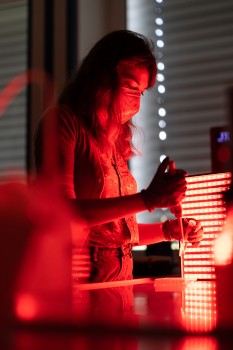
Seraphine Wegner is delighted that she can contribute her experience to the CRC and that she can learn new things as a result of the interdisciplinary collaboration. After her studies in Ankara and further studies and research stays in Chicago, Beijing, Heidelberg and Mainz, she is – strictly speaking – above all a chemist, but she sees herself as one who is “interested in biological processes and replicates them,” she says with a laugh. “Light is the primary source of energy in our life,” she adds, “and behind every biological process is chemistry.”
André Bednarz
This article was first published in the University newspaper “wissen|leben” No. 4, 1 June 2022
Collaborative Research Centre (CRC) 1459: Intelligent Matter
Producing intelligent matter requires interdisciplinary collaboration involving specialists from the fields of Physics, Chemistry, Material Sciences. Biology and Computer Science. 26 working groups from the University of Münster, the Max Planck Institute of Molecular Biomedicine, and the University of Twente are all collaborating in CRC 1459 to make this project a reality. In their work they examine various classes of materials: molecules, soft materials such as polymers, and solids. Their aim is to make matter intelligent.
Contact: Dr. Christina Kriegel (Managing Director), phone: 0251 83-34521, email: ckriegel@uni-muenster.de
Save the date
The “First Münster Symposium on Intelligent Matter” will be held on 22 June, starting at 9:50 a.m., at the Center for Soft Nanoscience (SoN) at Münster University. International experts will be presenting the results of their work in this field. There will also be a poster session in which members of the CRC will be talking about the progress made in their projects.
Further information
- CRC 1459 "Intelligent Matter"
- First Münster Symposium on Intelligent Matter 2022
- The original article in the university newspaper "wissen|leben" (in German)
- All issues of the university newspaper at a glance (in German)
- The article “‘Energy consumption places limits on digital computing’” also about the CRC 1459

